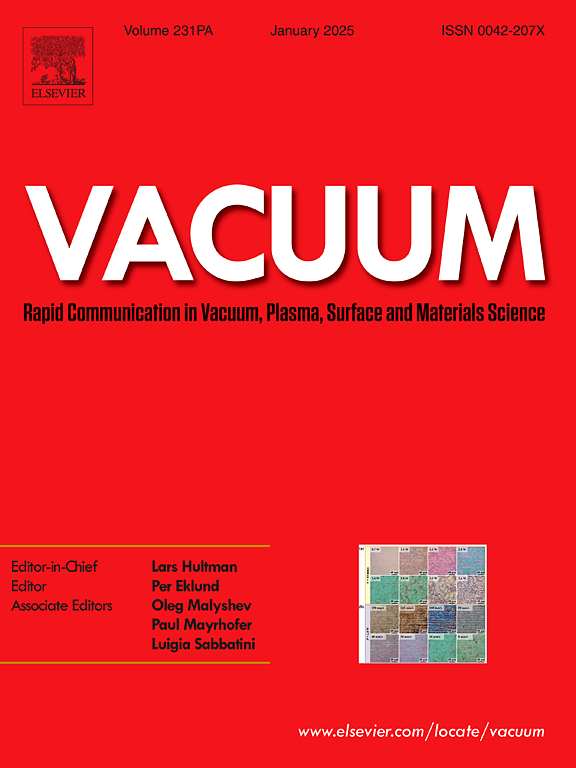石墨烯和石墨中π等离子体激元的第一性原理计算和理论分析:从二维到三维
IF 3.9
2区 材料科学
Q2 MATERIALS SCIENCE, MULTIDISCIPLINARY
引用次数: 0
摘要
在随机相位近似(RPA)框架下,利用第一性原理线性响应时变密度泛函理论(LR-TDDFT)以及基于紧密结合模型的理论分析,研究了石墨、石墨烯及其中间态中的等离子激元激发。研究结果表明,在三维石墨中,当q趋于零时,π等离子体激元的色散关系为ωπ(q)=ωp,0+αq2,其中ωp,0表示q=0时的精确激发能,α是拟合参数。相反,在二维石墨烯中,色散关系表现出明显的特征,ωπ(q)=Eg,M2+βq,其中Eg,M是布里渊区M点处的带隙,β是另一个拟合参数。这种显著的差异可归因于层间库仑相互作用的存在或不存在。此外,我们还深入分析了π等离子激子的激发能随层间距的变化规律。结果表明,激发能遵循ωp,0=Eg,M2+γ/d的形式,其中d为两层之间的距离,γ为拟合常数。具体来说,随着石墨层间距的逐渐增大,等离子激元的激发能逐渐降低,最终向石墨烯中观察到的值收敛。本文章由计算机程序翻译,如有差异,请以英文原文为准。
First-principles calculations and theoretical analysis of π plasmon in graphene and graphite: From 2D to 3D
Plasmon excitations in graphite, graphene, and their intermediate states have been investigated using first-principles linear response time-dependent density functional theory (LR-TDDFT) within the random phase approximation (RPA) framework, as well as through theoretical analysis based on the tight-binding model. Our findings reveal that in three-dimensional graphite, the dispersion relation of plasmons follows the pattern as q approaches zero, where represents the exact excitation energy at q=0 and is a fitting parameter. In contrast, in two-dimensional graphene, the dispersion relation exhibits a distinct characteristic given by , where is the band gap at the M point in the Brillouin zone and is another fitting parameter. This significant difference can be attributed to the presence or absence of interlayer Coulomb interactions. Furthermore, we conducted an in-depth analysis of how the excitation energies of plasmons vary with interlayer spacing. The results indicate that the excitation energy follows the form , where d is the distance between two layers and is a fitting constant. Specifically, as the interlayer spacing in graphite gradually increases, the excitation energy of plasmons progressively decreases, eventually converging towards the value observed in graphene.
求助全文
通过发布文献求助,成功后即可免费获取论文全文。
去求助
来源期刊

Vacuum
工程技术-材料科学:综合
CiteScore
6.80
自引率
17.50%
发文量
0
审稿时长
34 days
期刊介绍:
Vacuum is an international rapid publications journal with a focus on short communication. All papers are peer-reviewed, with the review process for short communication geared towards very fast turnaround times. The journal also published full research papers, thematic issues and selected papers from leading conferences.
A report in Vacuum should represent a major advance in an area that involves a controlled environment at pressures of one atmosphere or below.
The scope of the journal includes:
1. Vacuum; original developments in vacuum pumping and instrumentation, vacuum measurement, vacuum gas dynamics, gas-surface interactions, surface treatment for UHV applications and low outgassing, vacuum melting, sintering, and vacuum metrology. Technology and solutions for large-scale facilities (e.g., particle accelerators and fusion devices). New instrumentation ( e.g., detectors and electron microscopes).
2. Plasma science; advances in PVD, CVD, plasma-assisted CVD, ion sources, deposition processes and analysis.
3. Surface science; surface engineering, surface chemistry, surface analysis, crystal growth, ion-surface interactions and etching, nanometer-scale processing, surface modification.
4. Materials science; novel functional or structural materials. Metals, ceramics, and polymers. Experiments, simulations, and modelling for understanding structure-property relationships. Thin films and coatings. Nanostructures and ion implantation.
 求助内容:
求助内容: 应助结果提醒方式:
应助结果提醒方式:


